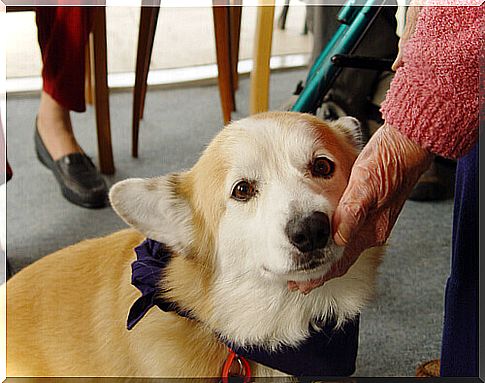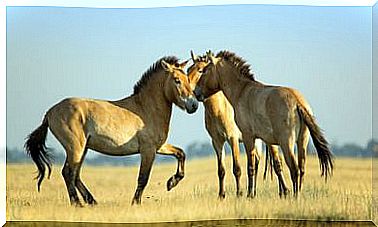A Lost Dog Travels More Than 50 Km To Return Home

This news was obtained through numerous media outlets and quickly went viral after appearing on Facebook: a missing dog traveled more than fifty kilometers to find her way home.
Once again, the love that dogs show for their owners has become palpable in this wonderful story, which again raises the question of how animals find their way home despite being very far away.
The history of Georgia

Georgia, an 8-year-old dog was lost in San Diego, California while walking with her family in the Los Peñasquitos Canyon Preserve, a reserve that offers trails for hiking, mountain biking and much more.
The dog began to chase a hare that passed in front of her. It was a matter of moments before he disappeared from the sight of Kris Anderson and his daughter Sarah, his masters.
The two women immediately alerted the forester and together with them immediately set out to search for the lost dog for hours and hours, without success. They continued the search also in the following days, unfortunately always without success.
The missing dog traveled more than 50 kilometers to return to its owners
Nine days later, when mother and daughter were hopeless, Georgia entered the kitchen door of their home.
Georgia was a little thin, tired and with some injuries, but very happy to be home again, after walking fifty-six kilometers, from the nature reserve to home, in the city of Carlsbad (San Diego).
After the incident, Georgia’s story was posted on Facebook and spread across much of the world.
How do animals find their way home from such great distances?
Who does not get excited when reading “A missing dog travels more than 50 km to go home” ? And, although not all stories of missing animals have a happy ending, we never cease to be amazed when these animals find their way home despite the time that has elapsed and the great distances that separate them from their owners.
How do they do it? While it is well known that their sense of smell is nothing short of exceptional, this sense can only be useful when they are not too far from their home.
It remains clear that dogs, as well as other animals, possess an incredible sense of direction.
The sense of orientation in animals
Most of the research conducted on the sense of direction of animals has had messenger pigeons as protagonists. However, these birds are not the only animals that manage to find a known place, from unknown places located at great distances.
In addition to dogs, there are other examples involving cats and horses. Not to mention migratory birds, which travel thousands of kilometers each year to return to the same place.
Although the conclusion seems to be that it is simply that animals “know where their home is”, the real question is, how do they know?
Magnetic fields and sense of direction

Some scientists try to explain this phenomenon using Earth’s magnetic fields. Nonetheless, this theory fails to explain the existence of a sense of direction in animals which, as in the case of carrier pigeons, allows them to find their way back under countless circumstances. Such as:
- After being transported in closed vans, along complicated routes long distances from the nest.
- Anesthetized.
- Transported on rotating vehicles.
- Deprived of the sense of smell.
Sheldrake’s morphogenetic fields
Biochemist and parapsychologist Rupert Sheldrake claims the existence of a morphogenetic field that would allow us to understand how living organisms behave.
According to his theory, the distinct natural systems inherit a kind of “collective memory” that would give an answer to most of the questions we ask ourselves about some of the behaviors of the animal world.
Sheldrake is the author of the book ” Dogs Knowing Their Owners Are Away From Home and Other Inexplicable Animal Faculties”, in which he tries to answer some of the main questions, such as how can dogs predict arrival. of the owners, even when they return at unusual times.
And, even if his ideas are not accepted by “mainstream science”, it could be a starting point to begin to understand how lost dogs find their way home.
Images courtesy of Miguel Olaya.









